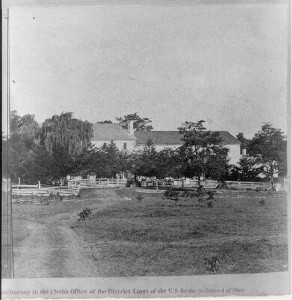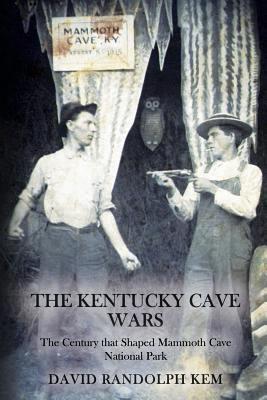Summer is wedding season, and the collections of the Manuscripts & Folklife Archives section of WKU’s Department of Library Special Collections provide evidence of the pomp and circumstance, excitement and humor with which Kentuckians have tied the knot through history.
To begin with, our collection of more than 7,000 Warren County, Kentucky marriage bonds begins in 1797 and is a gold mine for those researching family history. In addition, many collections of family papers, such as the Margie Helm Collection, contain wedding invitations and announcements. Other collections document the unusual; for example, a double wedding that took place inside Mammoth Cave in 1879, inaugurating a custom that lasted until 1941. Photographs, such as Mildred Tucker‘s before her 1925 wedding, are indispensable to the occasion. In particular, many a local bride proudly posed in a creation made by the celebrated Bowling Green dressmaker Mrs. A. H. (Carrie) Taylor.
And, of course, there are the diaries and letters of both participants and observers recalling the triumphs and tribulations of the big day. “This is Birdie’s wedding day,” wrote Russellville’s Fannie Morton Bryan on February 27, 1889. “Lena and Joe Gill and Mot Williams and myself stood up with them. That is as near married as I ever expect to be.” (She was right). Amid a whirlwind of preparations for her February 16, 1926 wedding, Bowling Green’s Mildred Potter and her mother addressed the “burning question” of attire for the men in the party. “Agonizing” over cutaways or tuxedos, they settled on “gray trousers and cutaways, with spats,” but a stressed-out Mildred “shed a few tears” when a telegram arrived from her fiance in New York that betrayed his misunderstanding of her diktat.
Some enjoy scrutinizing a wedding and judging it against their own ideal. Writing to his cousin in 1861, Charles Edmunds of Princeton described the curious ceremony of his family’s domestic servant. “Mother’s house girl Vic was married,” he reported. “An old negro preacher officiated, and he made the man promise to do a thing I never heard of before. . . he turned to the man and said, ‘Richard Calvert, do you promise to take this woman to be your lawful wife and be unto her a kind, loving and obedient husband’; if I had been his place I would not have agreed to that because I think that if ever I get married, my wife will have to obey me, and not I obey her, but he assented, and the ceremony was performed, and they were made man and wife upon those terms.”
Search TopSCHOLAR and KenCat for more of our collections that feature weddings.




 inally from Belgium came to the United States in 1857. It was noted that he brought “sunlight” to the interior of the cave by the use of magnesium, so that one of the greatest natural wonders of the world could be seen by many. His biography from a special edition of the “Journal of Speleological History” (2000) notes: “These were the first high quality photographs produced underground in any cave. Waldack was naturalized as an American citizen after his marriage to Mary Tanner (born about 1849) of Kentucky, who was also a photographer. He set up a photography shop at 31 West 3rd Street in Cincinnati and made many excellent views of buildings, streets, and bridges between 1857 and 1873. Most important was his 42 stereo cards of Mammoth Cave. The Anthony series was continuously printed until about 1872, and 12 of the photographs were printed as engravings in the 1870 book, “A Historical and Descriptive Narrative of the Mammoth Cave of Kentucky” by William S. Forwood.
inally from Belgium came to the United States in 1857. It was noted that he brought “sunlight” to the interior of the cave by the use of magnesium, so that one of the greatest natural wonders of the world could be seen by many. His biography from a special edition of the “Journal of Speleological History” (2000) notes: “These were the first high quality photographs produced underground in any cave. Waldack was naturalized as an American citizen after his marriage to Mary Tanner (born about 1849) of Kentucky, who was also a photographer. He set up a photography shop at 31 West 3rd Street in Cincinnati and made many excellent views of buildings, streets, and bridges between 1857 and 1873. Most important was his 42 stereo cards of Mammoth Cave. The Anthony series was continuously printed until about 1872, and 12 of the photographs were printed as engravings in the 1870 book, “A Historical and Descriptive Narrative of the Mammoth Cave of Kentucky” by William S. Forwood.
 karst topography is riddled with caves. This push for visitors lead to one of the most interesting parts of Mammoth Cave history. It was the period known as the “Kentucky Cave Wars.” It was a time when local cave owners used devious advertising and other illegal means to lure tourists to their underground treasures and away from the “real” cave. They did this impersonating rangers and flagging travelers off the road before they could reach the cave and national park. A recent book by David Kem, The Kentucky Cave Wars: The Century That Shaped Mammoth Cave National Park, delves into this time by “telling the story of Mammoth Cave’s greatest competitors in the late nineteenth and early twentieth centuries. From the death of Dr. Croghan and the first competitors popping up in Cave Country, to the national park’s creation and beyond, more than a century of fighting for tourist dollars shaped the decisions in and around the famous cave.” Kem used several photographs and other illustrative materials from the Kentucky Library Research Collections to illustrate his new book. Find materials about the cave and other subjects in the
karst topography is riddled with caves. This push for visitors lead to one of the most interesting parts of Mammoth Cave history. It was the period known as the “Kentucky Cave Wars.” It was a time when local cave owners used devious advertising and other illegal means to lure tourists to their underground treasures and away from the “real” cave. They did this impersonating rangers and flagging travelers off the road before they could reach the cave and national park. A recent book by David Kem, The Kentucky Cave Wars: The Century That Shaped Mammoth Cave National Park, delves into this time by “telling the story of Mammoth Cave’s greatest competitors in the late nineteenth and early twentieth centuries. From the death of Dr. Croghan and the first competitors popping up in Cave Country, to the national park’s creation and beyond, more than a century of fighting for tourist dollars shaped the decisions in and around the famous cave.” Kem used several photographs and other illustrative materials from the Kentucky Library Research Collections to illustrate his new book. Find materials about the cave and other subjects in the 

 Clara Ramsey DeWilde was a pretty typical WKU student in 1945. Born in Russellville, Kentucky in 1926, she was 19 when she came to Bowling Green. She lived in West Hall and created a scrapbook of photographs of her time on the Hill. These include friends on campus, Halloween in the dorm, a trip to Mammoth Cave and family.
Clara Ramsey DeWilde was a pretty typical WKU student in 1945. Born in Russellville, Kentucky in 1926, she was 19 when she came to Bowling Green. She lived in West Hall and created a scrapbook of photographs of her time on the Hill. These include friends on campus, Halloween in the dorm, a trip to Mammoth Cave and family.